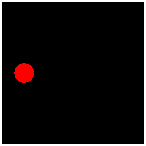
(see below)
Lucidity and Science, Parts I, II, III
Related links:
Lucidity Principles in Brief
Science, Music, and Mathematics: The Deepest Connections
(Second Edition, published September 2023)
The Eocene Syndrome
Lucidity, science, and the arts: what we can learn from
the way perception works (Kobe Lecture, 2000)
Audit, Education and Goodhart's Law
The Master and his Emissary
(a wonderful new insight into how perception evolved)
Prelude to my book -- some early drafting.
(It makes heavy weather of some things but I'm keeping it
for the time being, in case anyone feels interested.)
The original published papers on Lucidity and Science
are available from the following links
with a few minor corrections:
McIntyre, M. E., 1997:
Lucidity and science: I.
Writing skills and the pattern perception hypothesis.
Interdisciplinary Science Reviews ,
22, 199-216
(Please note an uncorrected mistake in endnote 58
about musical harmony: instead of `circle-of-fifths proximity'
I should have written `harmonic-series proximity'.
For clarification, see `harmonic-series proximity'
near the bottom of my
music page.)
McIntyre, M. E., 1997:
Lucidity and science: II.
From acausality illusions and free will
to final theories, mathematics, and music.
Interdisciplinary Science Reviews ,
22, 285-303
McIntyre, M. E., 1998:
Lucidity and science: III.
Hypercredulity, quantum mechanics, and scientific truth.
Interdisciplinary Science Reviews ,
23, 29-70
- NB: see the
CORRIGENDUM to Part III,
a slightly corrupted
version of which was published in the
December 1998 issue of Interdisciplinary Science Reviews
-
The links above the CORRIGENDUM point to pdf scans of Parts I and II and
to the html version of Part III originally published by Charlesworth
(websearch lucidity charlesworth).
In the pdf scan of Part I, two of the quoted figures have been redrawn
for copyright reasons. Apart from those figures,
the other quoted material comes under the rules of `fair
use'. By agreement with the Editor at the time, I own the copyright to
everything else in these essays and I wish to make the material
available for fair use by others. The discussion of `acausality
illusions' in Part II is
briefly summarized here.
Recently, the publishers (formerly the Institute of Materials,
now Maney Publishing) have made the papers available online
without corrections but searchable:
part I,
part II,
part III.
Here are links to some supplementary material:
- Abstract to Part I,
together with some notes on the significance of the
`walking lights' animation.
- A journey into musical hyperspace.
This is an expanded version
of endnote 58 from Part I, available from a link
near the bottom of my
music page.
- Some music examples arising from the discussion on p.290: lucidity-music.gif - 8.5 kb, and
lucidity-orch1.gif - 10 kb,
lucidity-orch2.gif - 10 kb,
lucidity-orch3.gif - 10 kb.
Corresponding audio files are available as PC .wav files
in my anonymous ftp site.
Thanks to Ben Finn of
Sibelius Software
and to
Jeffrey Ginn of
Ginn Music
for valuable professional help with these.
- There are a few other figures and music examples; these are best
downloaded from my anonymous ftp site: click
here
to reach it directly; browse or print all the files beginning
`lucidity' and ending `.gif' (or, if using ftp,
type mget lucidity*.gif).
-
I gave a
related talk, with musical illustrations --
including some remarkable New Zealand birdsongs --
at the 2013
Hay-on-Wye Philosophy and Music Festival
of the Institute of Art and Ideas.
The birdsongs are also available via QR codes in my book
Science, Music, and Mathematics: The Deepest Connections.
The animation at top right, courtesy of Dr Björn Hassler,
demonstrates one of the
`acausality illusions'
discussed in Part II, p.289.
If the animation runs at the correct nominal timings, with one
complete cycle taking just under one second, and if you have normal vision,
then you will probably see, or sense, what vision researchers call
`apparent motion'. The demonstration works best if you fix attention on the
spot midway between the two flashing discs. It may help to look fixedly at a
pointer or marker, or the tip of your finger, placed midway between.
If you sense such an apparent motion, then you will probably
sense the left-to-right motion as
beginning distinctly before the perceived time of the bright flash.
Phenomena like these -- and there are even clearer examples in
music -- underline the distinction, sometimes forgotten,
between perceived time
(a property of the brain's internal models) and
physical time (a property of the outside world,
such that cause precedes effect).
Here's the way to my
draft-revision toolkit (2K), and to
lucidity principles in brief (6.5K).
Back to my home page,
http://www.damtp.cam.ac.uk/user/mem/
----
back to the Atmospheric Dynamics home page
http://www.atm.damtp.cam.ac.uk/
Michael Edgeworth McIntyre (M.E.McIntyre at-sign damtp.cam.ac.uk),
postal address 98 Windsor Road, Cambridge CB4 3JN, UK.
Copyright © Michael Edgeworth McIntyre 2000.
Last updated 29 Sept 2023


